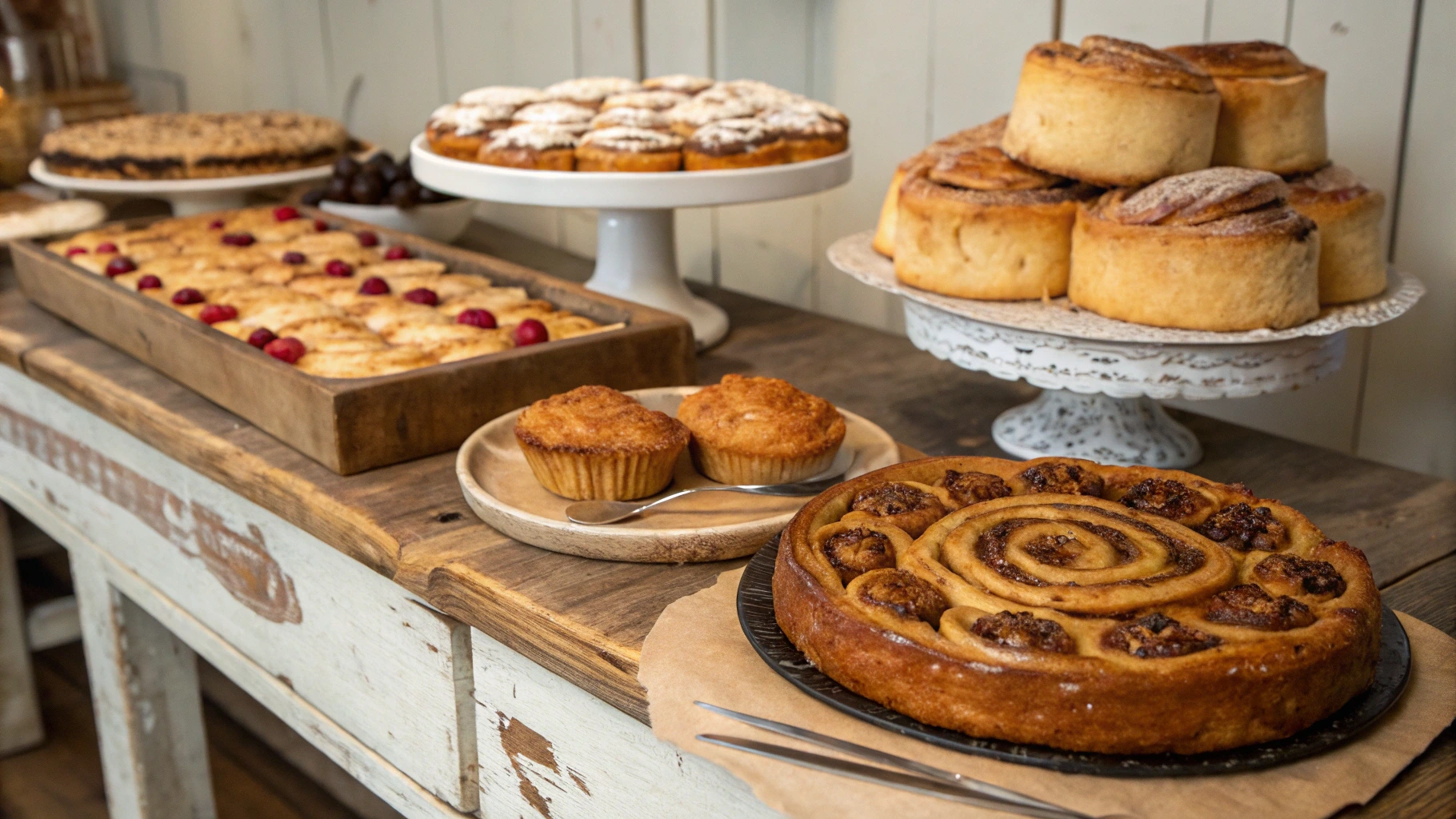Sourdough is celebrated for its tangy flavor and nutritional perks, but can it shine in desserts? In this article, we’ll explore how sourdough works in sweet recipes, its unique benefits, and the delightful treats you can create with it. Whether you’re a seasoned baker or just curious, you’ll discover why sourdough might just be your new dessert hero. Let’s dive in!
Part 1: Understanding Is Sourdough Good for Desserts?
What Makes Sourdough Ideal for Desserts?
Sourdough is a naturally fermented dough made from a combination of flour and water. Unlike regular yeast, sourdough relies on wild yeast and lactic acid bacteria for fermentation. This fermentation process gives sourdough its signature tangy flavor and airy texture. Traditionally used for bread, sourdough has found its way into desserts, offering bakers a way to elevate sweet treats with a complex flavor profile.
But why does sourdough work so well in desserts? The answer lies in its unique fermentation process. This natural leavening not only enhances flavor but also provides a tender crumb that’s perfect for indulgent baked goods.
How Does Sourdough Enhance Dessert Texture and Flavor?
When sourdough meets dessert, magic happens. The fermentation process introduces a subtle tanginess that complements sweet flavors beautifully, creating a harmonious balance. For example, in brownies, sourdough adds depth to the chocolate, while in cakes, it creates a moist and fluffy texture that melts in your mouth.
Texture-wise, sourdough’s slow fermentation breaks down gluten, resulting in a tender crumb that feels luxurious. The slight chewiness it brings is ideal for cookies and biscuits, making them satisfying yet delicate.
Using sourdough in desserts isn’t just about taste—it’s about creating layers of flavor and texture that keep every bite interesting. It’s no wonder sourdough is becoming a secret weapon for dessert lovers everywhere.
Part 2: Benefits of Using Sourdough in Desserts (250 words)
Why Sourdough is a Healthy Dessert Option
One of the standout benefits of using sourdough in desserts is its positive impact on digestion. The fermentation process breaks down phytic acid in grains, making nutrients more accessible and easier for your body to absorb. This can make desserts like sourdough cakes or cookies feel less heavy compared to treats made with traditional doughs.
Not only does sourdough improve digestibility, but it also contributes beneficial bacteria, which can support gut health. For dessert enthusiasts looking for a healthier option, sourdough provides a compelling answer to the question, “Is sourdough good for desserts?” With its nutrient-packed profile and the added benefits of fermentation, sourdough transforms indulgent treats into something a little more wholesome.
How Sourdough’s Tangy Flavor Transforms Desserts
The natural tanginess of sourdough adds a depth of flavor that traditional desserts often lack. Instead of overly sugary sweetness, sourdough offers a balanced, nuanced taste that enhances the natural flavors of ingredients like chocolate, fruit, and spices.
This tangy-sweet combination works wonders in desserts such as sourdough brownies or fruit tarts. Imagine the slight sourness amplifying the richness of dark chocolate or contrasting beautifully with the sweetness of ripe berries. It’s this unique interplay of flavors that keeps people coming back for more.
Whether you’re aiming for health benefits or a sophisticated flavor twist, sourdough is a versatile and delicious option for dessert recipes.
Popular Recipes Answering Is Sourdough Good for Desserts?
Making Decadent Sourdough Brownies
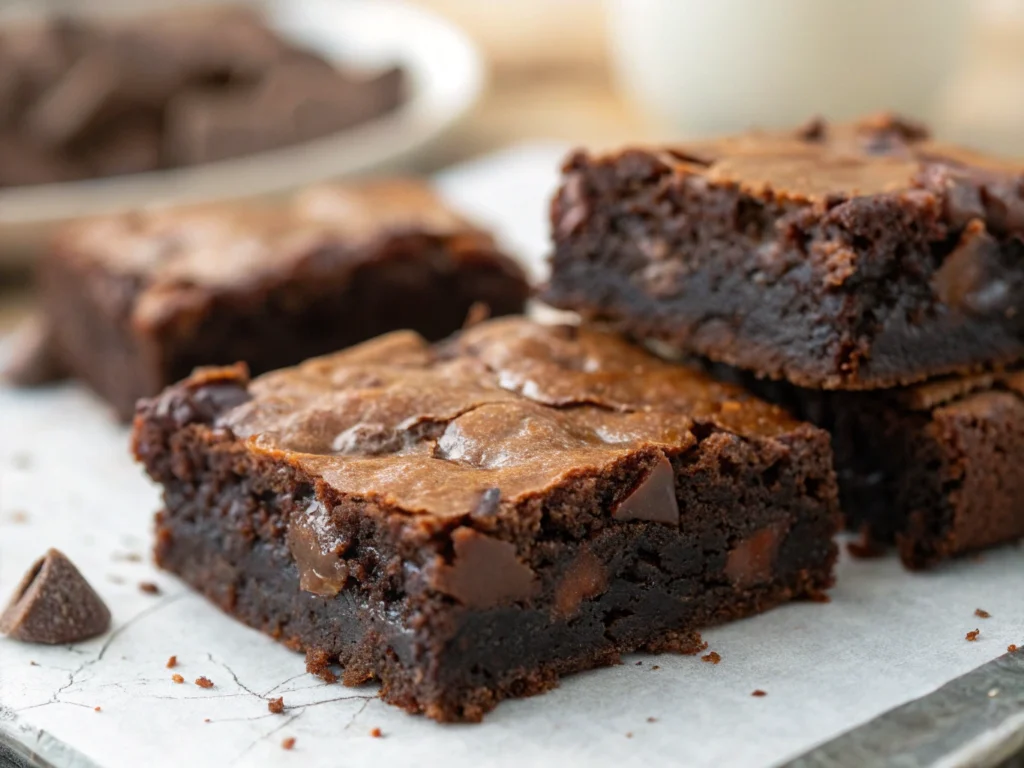
If you’ve ever wondered, “Is sourdough good for desserts?” brownies are a fantastic place to start. Adding sourdough starter to brownie batter creates an irresistibly fudgy texture with a slight tang that enhances the chocolatey richness. Plus, the natural fermentation lends a depth of flavor that you won’t find in regular brownies.
To make sourdough brownies, simply mix your active sourdough starter with melted butter, sugar, cocoa powder, and eggs. Fold in flour and chocolate chips, then bake until gooey perfection. These brownies are perfect for anyone craving a dessert that’s both comforting and unique.
Creating Fluffy Sourdough Cakes and Cupcakes
Sourdough cakes and cupcakes take traditional recipes to the next level. The fermentation process keeps the crumb moist and tender, while the tanginess balances out the sweetness. This makes sourdough ideal for flavors like vanilla, lemon, or even spiced carrot cakes.
To bake a sourdough cake, add your starter to a basic cake recipe. Don’t forget to adjust for the extra liquid or flour the starter brings to the mix. Whether topped with cream cheese frosting or a dusting of powdered sugar, sourdough cakes are a surefire crowd-pleaser.
Why Sourdough Cookies Are Worth Trying
Cookies and biscuits get a delightful makeover when sourdough enters the mix. The subtle tang adds complexity to classic chocolate chip cookies, while in biscuits, it creates a flaky, tender texture.
For cookies, incorporate your sourdough starter into the dough, mixing it with butter, sugar, and your favorite add-ins. Biscuits, on the other hand, benefit from a longer fermentation period, which enhances their flavor and structure.
From brownies to biscuits, sourdough proves its versatility and charm in desserts. Each recipe highlights how this humble starter can turn everyday treats into extraordinary delights!
Part 4: Tips for Baking Desserts with Sourdough
Adjusting Recipes to Incorporate Sourdough
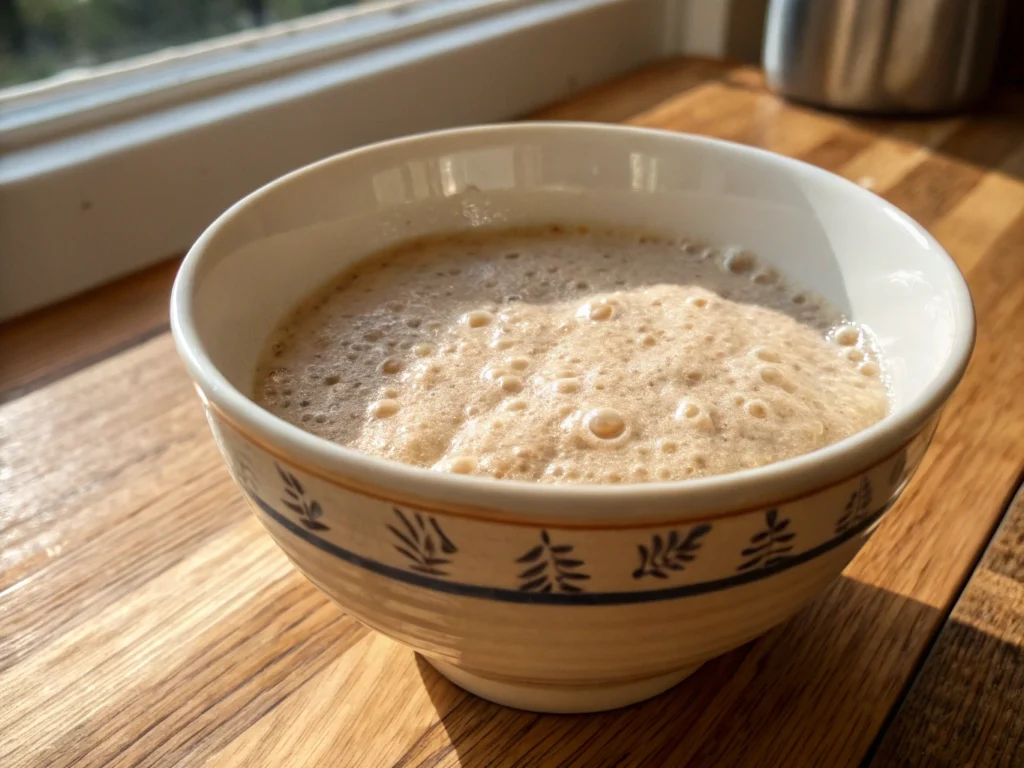
Incorporating sourdough into desserts might seem tricky, but with a few adjustments, it’s surprisingly simple. The key is to balance the hydration and acidity of your sourdough starter with the rest of your ingredients. For example, if your starter is particularly runny, reduce the amount of liquid in the recipe. Similarly, a tangy starter might call for a slight increase in sweetness to maintain the flavor balance.
When adapting recipes, start small. Use sourdough in place of a portion of the flour and liquid in the recipe, and gradually increase as you gain confidence. Is sourdough good for desserts? Absolutely—once you master these tweaks, you’ll unlock a world of possibilities.
Balancing Tanginess and Sweetness in Sourdough Desserts
One of the joys of using sourdough in desserts is its tangy flavor. However, it’s important to keep it from overpowering the sweetness. Add complementary ingredients like chocolate, fruits, or warm spices to enhance the overall flavor. For instance, the slight sourness of sourdough pairs beautifully with dark chocolate or citrus fruits.
Additionally, letting your dough ferment for longer can mellow its tanginess. Experimentation is key, so don’t be afraid to adjust the fermentation time to suit your taste.
For more dessert ideas, check out this guide on sourdough dessert recipes.
Solving Challenges of Baking with Sourdough
Avoiding Overpowering Tang in Sourdough Desserts
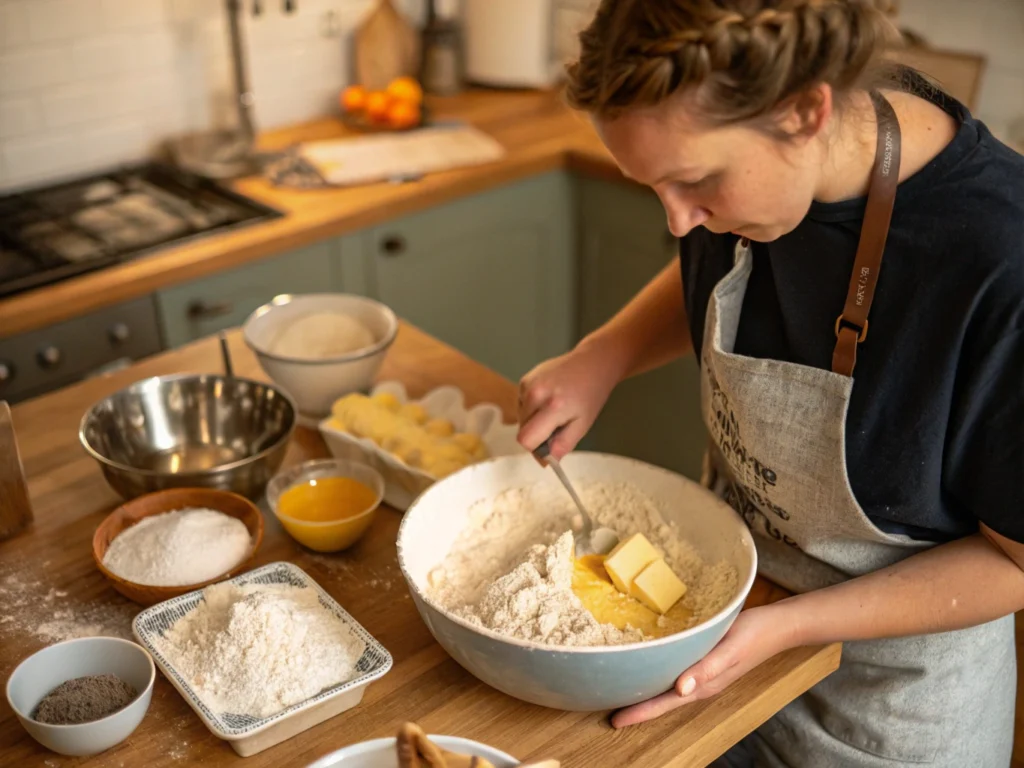
While the tangy flavor of sourdough can elevate desserts, it can sometimes feel too strong for certain recipes. To address this, use a less mature starter or shorten the fermentation time. These adjustments help maintain a milder taste, perfect for delicate desserts like sponge cakes or muffins.
Another trick is to pair sourdough with bold flavors like chocolate or coffee. These ingredients naturally balance out the tanginess, creating a harmonious blend. So, is sourdough good for desserts? Yes, but it’s all about finding the right combination of flavors!
Managing Fermentation Times for Perfect Sourdough Treats
Sourdough’s slower rising times can be challenging, especially if you’re used to baking with commercial yeast. Planning ahead is crucial. Allow enough time for the fermentation and proofing stages, especially when making desserts like sourdough bread pudding or cakes.
To speed things up, you can use a warm environment or even add a small amount of commercial yeast alongside the sourdough starter. This hybrid method gives you the best of both worlds—rich sourdough flavor and quicker rising times.
Mastering these techniques ensures your sourdough desserts turn out perfectly every time. With patience and practice, you’ll see why sourdough is a game-changer for dessert enthusiasts.
Is Sourdough the Healthier Dessert Choice?
Health Benefits of Sourdough in Sweet Recipes
Sourdough isn’t just about flavor—it offers several health benefits that make it a better choice than conventional doughs for desserts. The fermentation process breaks down complex carbohydrates and gluten, making sourdough desserts easier to digest. This can be particularly beneficial for those with mild gluten sensitivities or digestive issues.
Moreover, sourdough is rich in beneficial bacteria, which can support gut health. Compared to traditional baking, sourdough often requires less sugar, as its natural tangy flavor balances sweetness. This means desserts like sourdough cookies or cakes can be a slightly healthier indulgence. Is sourdough good for desserts? If you’re looking for a guilt-free treat, it’s hard to beat!
Sourdough Desserts for Special Diets
For those on specific diets, sourdough desserts can be a great option. They’re typically lower in glycemic index than standard baked goods, making them suitable for people monitoring their blood sugar levels. Additionally, because sourdough enhances nutrient absorption, you’ll get more out of the ingredients used in your recipes.
That said, portion control is still essential, as even sourdough desserts contain calories and sugar. With its combination of health benefits and indulgent flavors, sourdough proves that you can enjoy dessert without compromising on wellness.
FAQs About Is Sourdough Good for Desserts?
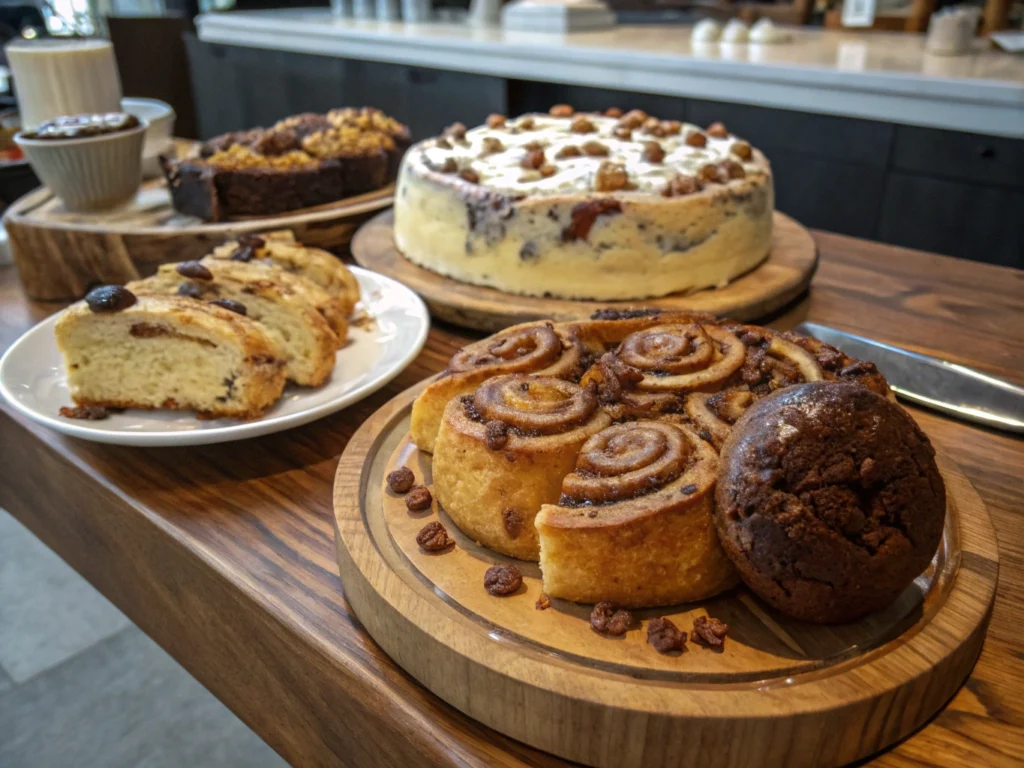
Can You Use Sourdough in Sweet Baking Recipes?
Absolutely! Sourdough is versatile enough to work in a variety of sweet recipes. From brownies to pancakes, its tangy flavor adds a unique twist to desserts. Many bakers agree that sourdough elevates traditional recipes, turning them into gourmet creations.
What Types of Desserts Can You Make with Sourdough?
You can use sourdough to make cakes, cookies, brownies, muffins, and even pie crusts. The slow fermentation process not only enhances the flavor but also improves the texture of these desserts. If you’re new to sourdough, starting with a simple recipe like sourdough chocolate chip cookies is a great idea.
Does Sourdough’s Tanginess Overwhelm Sweet Desserts?
Not necessarily. The level of tanginess depends on the age of your starter and the fermentation time. For milder flavors, use a freshly fed starter or shorten the fermentation period. This way, you can enjoy a subtle tang that complements, rather than overpowers, the dessert’s sweetness.
Sourdough offers countless possibilities in the world of desserts. For more ideas, revisit the question “Is sourdough good for desserts?” and start experimenting with your own recipes!
Conclusion: Why Sourdough Deserves a Spot in Your Dessert Repertoire
So, is sourdough good for desserts? The answer is a resounding yes! Whether you’re drawn to its tangy flavor, nutritional benefits, or the sheer versatility it brings to baking, sourdough is a game-changer for sweet treats. From brownies and cookies to cakes and tarts, the possibilities are endless.
The natural fermentation process not only enhances the taste and texture of desserts but also introduces health benefits that traditional methods can’t match. Plus, its unique ability to balance sweetness with a touch of tang makes every bite a delightful surprise.
As you explore the world of sourdough desserts, don’t be afraid to get creative. Experiment with different flavors, textures, and recipes to discover new favorites. Remember, even small adjustments to your starter or fermentation time can lead to big changes in the final product.
If you’re ready to start baking, check out the links and tips shared in this article to guide your journey. Who knows? Sourdough might just become your secret ingredient for desserts that everyone will rave about!
For more creative ideas and recipes, visit DeliciouRecipes’ sourdough dessert collection. Happy baking!

